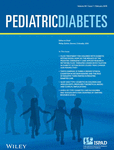Maternal dietary supplement use and development of islet autoimmunity in the offspring: TEDDY study
Abstract
Objective
We investigated the association between maternal use of vitamin D and omega-3 fatty acids (n-3 FAs) supplements during pregnancy and risk of islet autoimmunity (IA) in the offspring.
Methods
The Environmental Determinants of Diabetes in the Young (TEDDY) Study is prospectively following 8676 children with increased genetic risk for type 1 diabetes in Finland, Germany, Sweden, and the United States. Blood samples were collected every 3 months between 3 and 48 months of age then every 6 months thereafter to determine persistent IA. Duration, frequency, and supplement dose during pregnancy were recalled by mothers at 3 to 4 months postpartum. Cumulative intakes of supplemental vitamin D and n-3 FAs were analyzed as continuous or binary variables. We applied time-to-event analysis to study the association between maternal supplement use and IA, adjusting for country, human leukocyte antigen-DR-DQ genotype, family history of type 1 diabetes and sex. Secondary outcomes included insulin autoantibodies (IAA) or glutamic acid decarboxylase (GADA) as the first appearing autoantibody.
Results
As of February 2018, there were 747 (9.0%) children with IA. Vitamin D supplement intake during pregnancy (any vs none) was not associated with risk for IA (hazard ratio [HR] 1.11; 95% confidence interval [CI] 0.94, 1.31); neither was cumulative vitamin D supplement intake. Supplemental n-3 FA intake was similarly not associated with IA risk (HR: 1.19, 95% CI 0.98, 1.45). Similar lack of association was observed for either IAA or GADA as the first appearing autoantibody.
Conclusions
The TEDDY cohort showed no evidence of benefit regarding IA risk for vitamin D or n-3 FA supplementation during pregnancy.
CONFLICTS OF INTEREST
The authors have no conflicts of interest to report.




